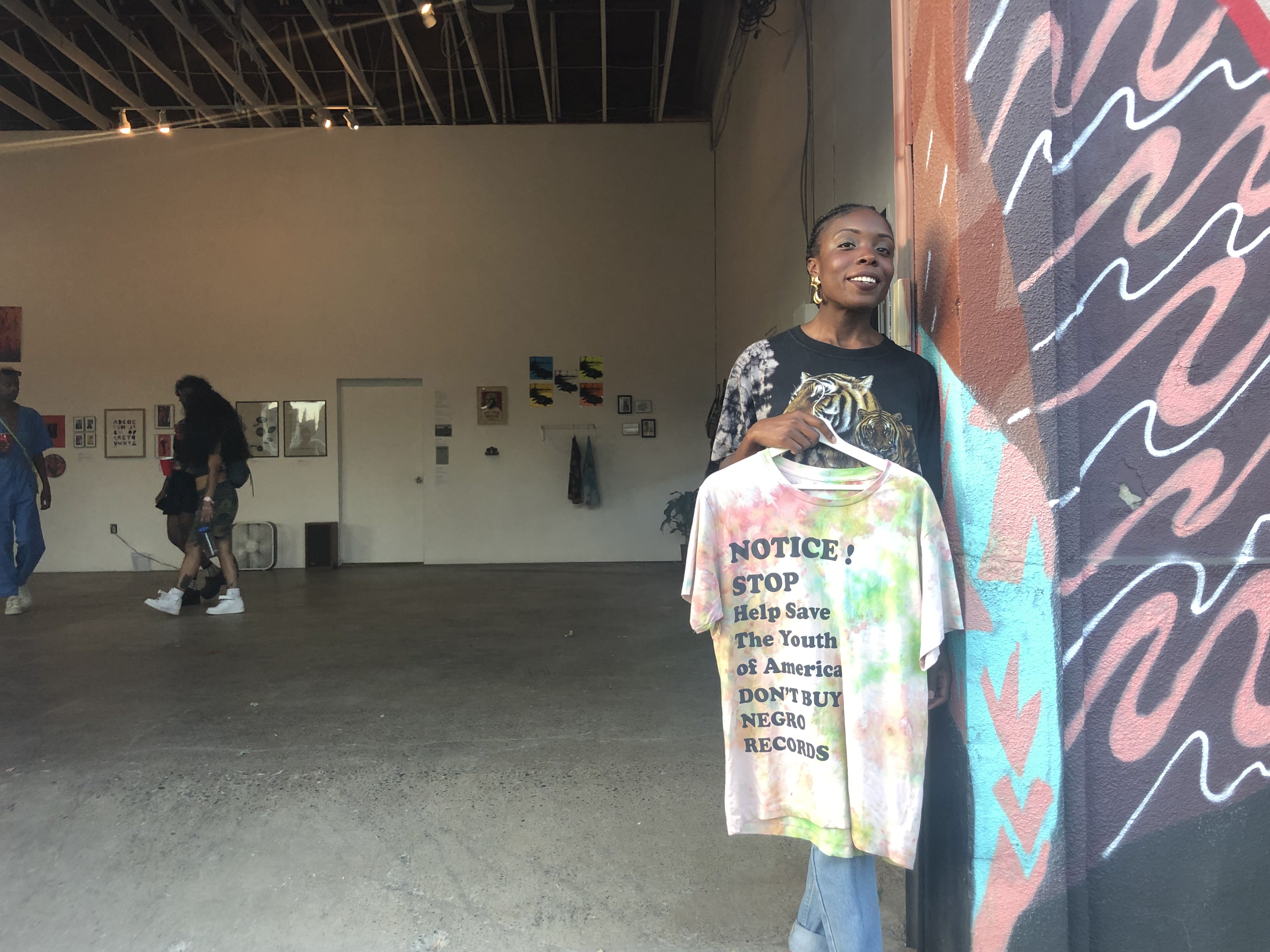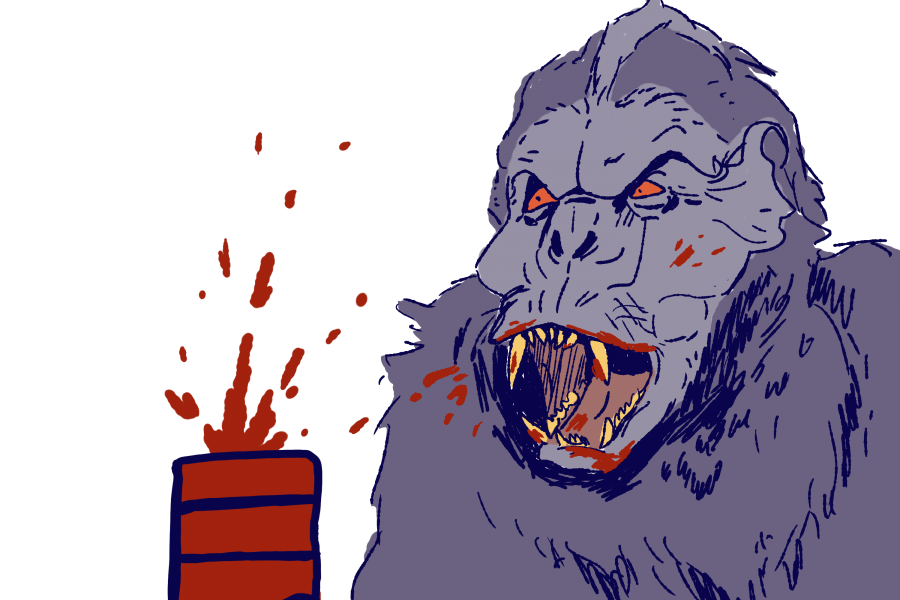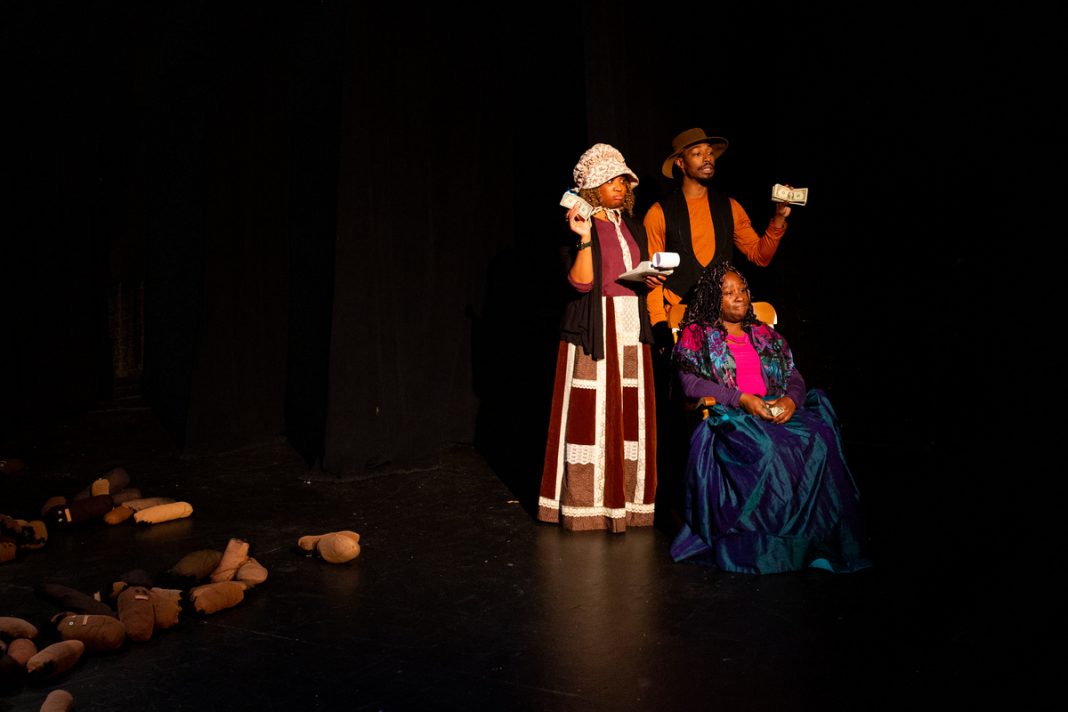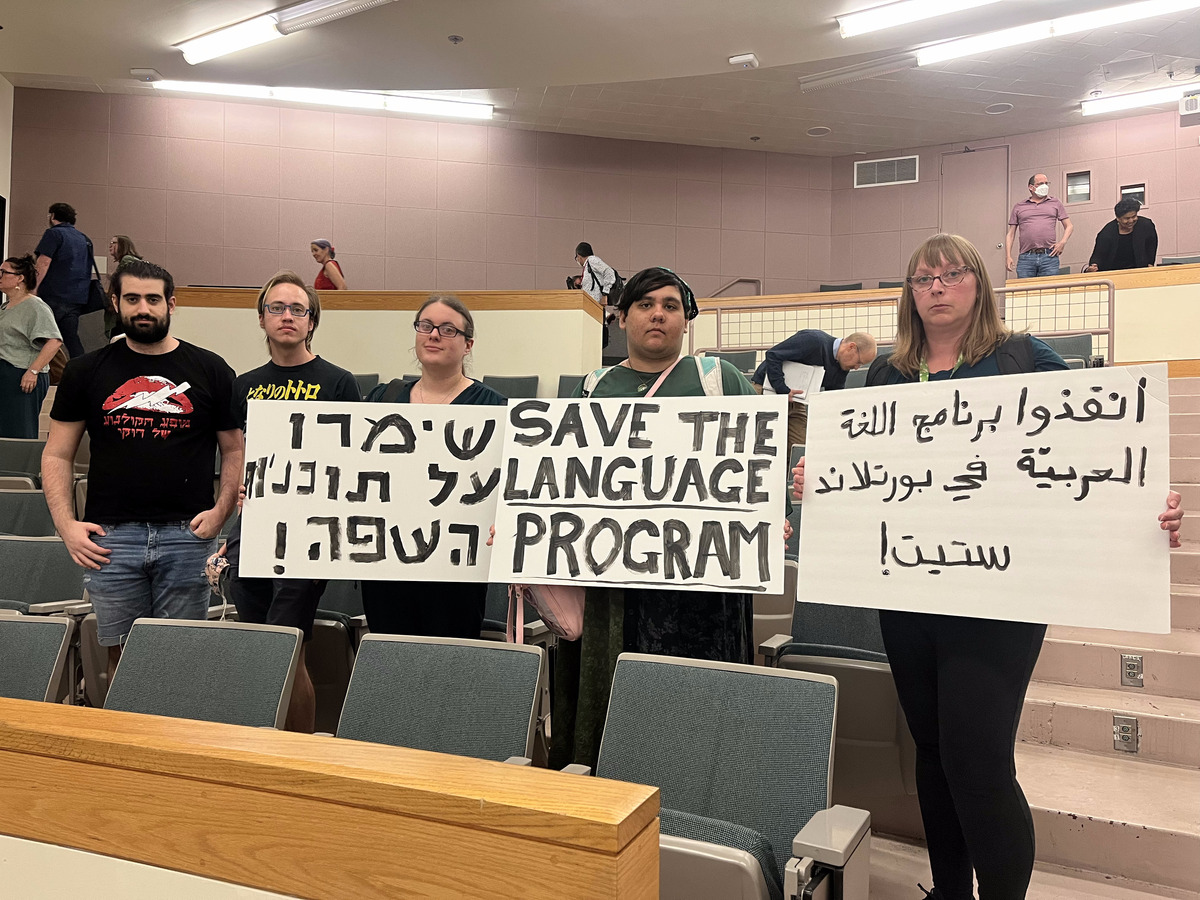‘Brown Sugar: Where We At’ art show depicts Black culture
In a warehouse space in North Portland, pieces of Blackness accented large white walls. Upon closer inspection, each artifact depicted Black culture from a different perspective. Many emphasized the beauty and strength of the culture, while others highlighted the perpetual hatred that oppresses it. Christine Miller, the curator of the art show, “Brown Sugar: Where We At,” hopes that viewers who experience the collection leave with a clearer understanding of the ways in which black women and femmes are seen.
“Brown sugar is widely known within the Black community—it’s so nostalgic for Black womanhood,” said Miller, who moved here a little over a year ago from New York. “It’s a way of paying homage.” Not just to black women in general, but also to “Where We At” Black Women Artists, Inc (WWA), an art collective aligned with the Black Arts Movement of the ‘60s and ‘70s. Miller was heavily inspired by what WWA did decades ago, wanting to bring that type of vibe to the city’s lack of representation when it comes to Black femme and female artists.
“Portland is a challenge, but I think where there are challenges, there’s opportunity,” Miller said. “It’s a matter of ‘How can I be a part of this space?’ It’s almost like being a sacrificial lamb. I know I’m here for a reason, but why can’t it be a little easier? Sometimes you need resilience to create change.”
“Brown Sugar: Where We At” features 10 visual artists, each using unique mediums in some way or another associated with Black culture. Intisar Abioto’s “Sugar Lee” includes portraits of her sisters alongside mixed heaps of brown sugar and soil. Asha Harper’s pieces use basketball jerseys to restructure chairs, while Sabrina Powell uses weave hair to make macrame-style plant hangers.
Miller’s own work was also a part of the show and was the most confrontational in its subject matter. Self-described as a mix between Betye Saar and Kara Walker, she debuted two different projects—”Alligator Bait” and “Blackphoria”—that use found Black Americana pieces as reminders of where our country used to be with its darker citizens. For instance, her piece “Alligator Bait Black Babies Free Lunch in the Jungle” makes use of a postcard she found depicting a Black child getting eaten by an alligator, while “Salt for Watermelon” is a display of Sambo salt and pepper shakers.
“It talks about mental terrorism and internalized oppression placed on Black Americans,” Miller said. “I’m really interested in the little, everyday ordinary things that were just in people’s households without a thought. Racism was so tangible and so neutralized that people were just whatever about it.”
Another one of her pieces, “Pearls for Aunt Jem,” shows an aluminum sign circa the early 1900s of Aunt Jemima pancake flour. Miller framed the sign in an acrylic display case surrounded by pancake batter and pearls. She found the sign at a shop in Beaverton as part of an Oregon Humane Society estate sale, and the process of acquiring it was one that continues to stick with her. “It was powerful to buy because I know people who probably lived through this day and age; it wasn’t something they could buy,” Miller said. “I wasn’t going to let people who aren’t responsible with this pick it up and laugh. It felt like I was doing something for the ancestors.”
In a way, the Aunt Jemima sign summed up the empowering message of the entire “Brown Sugar” exhibit—by communicating how Black women and femmes shouldn’t be seen in society or even within the Black community itself.
“Growing up in New York around a lot of Black people, I didn’t deal with a lot of racism—I dealt with colorism,” Miller said. “I always wondered why and where Black people get this idea of themselves. It’s pumped from imagery like this, telling you ‘this is who you are.’”
“I’ve learned who I am and I’ve also learned who I’m not,” Miller said. “Aunt Jemima is a fictional character created to promote slavery. It’s not based on anyone real. They tried to use her to tell me the kind of Black person I am, but I know I’m not that.”
“Brown Sugar: Where We At” will be returning to the Tips on Failing space in North Portland next year. Miller isn’t sure if she’ll use all of the same artists—presenting different pieces, of course—next time around, but next year’s exhibit will be up for much longer.
“A week wasn’t enough,” Miller said. “These artists deserve a whole month. We deserve all this.”
Cervanté Pope is a music and culture journalist whose work has been included in various publications around Portland including Willamette Week, the Portland Mercury and the Portland Observer, as well as a couple of creative nonfiction anthologies. When she's not tackling a giant mountain of deadlines she can be found headbanging at a metal show, advocating for animal rights or trying to scheme a way to get on Family Feud.






